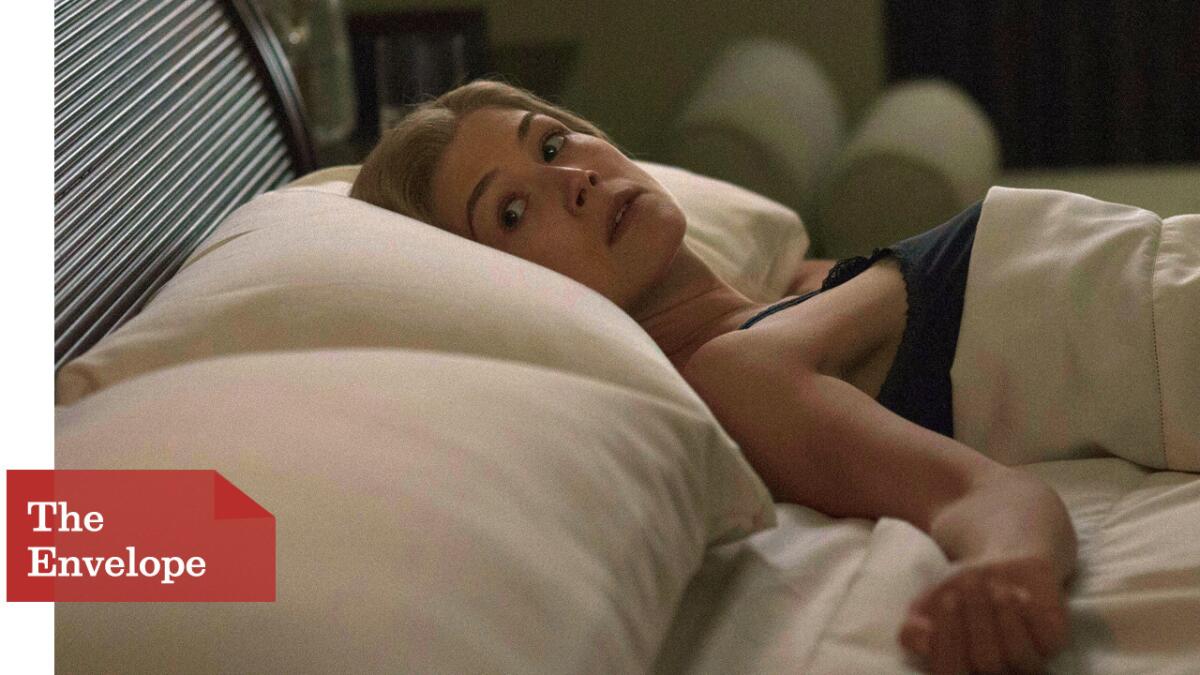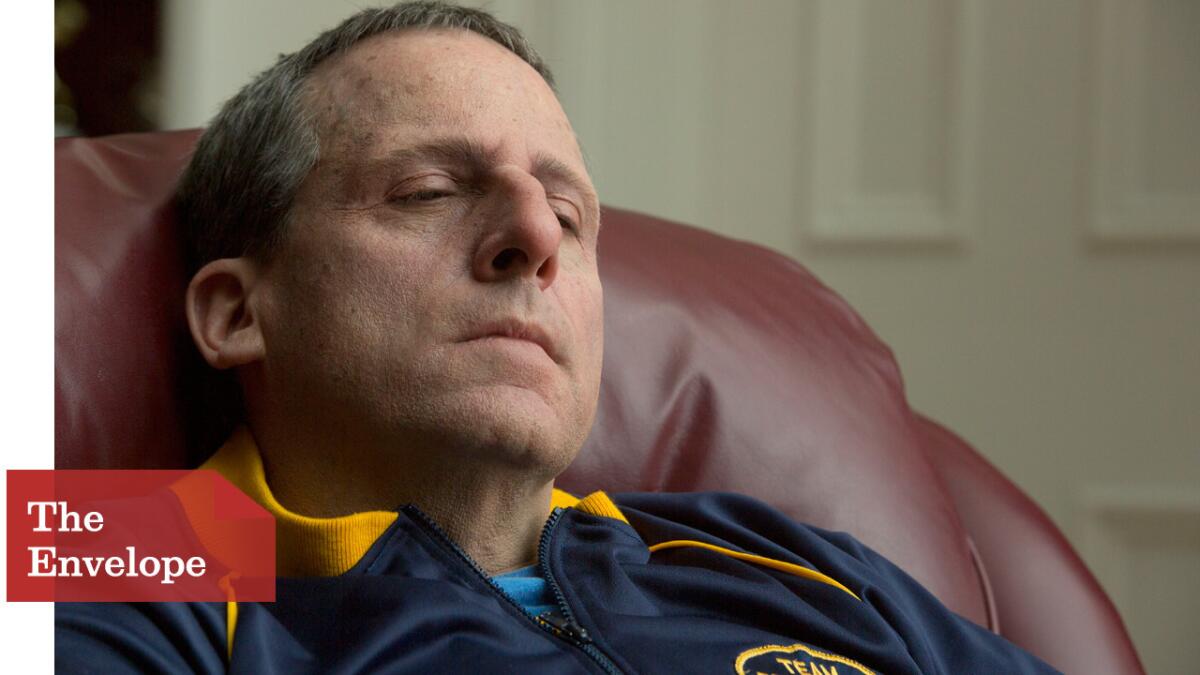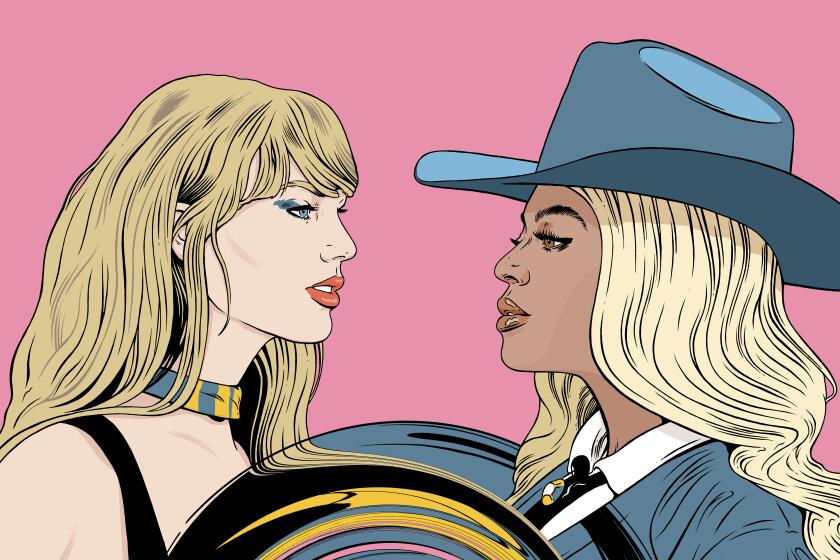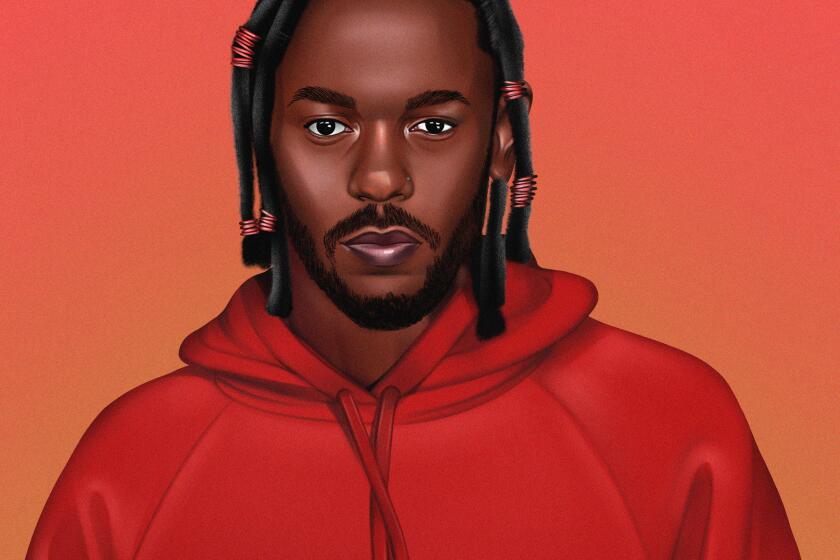Video: The moments that might win them an Oscar
Actors receive Academy Awards for great performances, not scenes; at least, that's the party line. But the fact is that in any great acting performance there is a small gem that outshines the rest, one in which a character takes on another dimension and transcends the material. That moment, which can be subtle, grand, underplayed or outsized, is something rare and special, something worthy of an Oscar. Here, producers, directors and writers tell us what they think was that special moment for the nominees for lead actress and actor.
Click on a name to jump directly to a specific nominee's performance or scroll through the list and watch them all.
Lead actress nominees:
Marion Cotillard | Rosamund Pike | Felicity Jones | Julianne Moore | Reese Witherspoon
Lead actor nominees:
Steve Carell | Bradley Cooper | Benedict Cumberbatch | Michael Keaton | Eddie Redmayne
Marion Cotillard in "Two Days, One Night"
The setup: Cotillard as Sandra is in a car with her husband, Manu, when Petula Clark's "La Nuit n'en Finit Plus" ("Needles and Pins" in the U.S. version) comes on the radio, which amplifies her desperate situation.
Key scene: "Marion, with just her smile and very slight changes in the intensity of her gaze, brings to life Sandra's struggle with depression, her love for Manu and, at the same time, her feeling of not existing, her intense sorrow at not being able to rid herself of this feeling that keeps haunting her. The extraordinary thing, in our eyes, is that Marion does all this without turning it into a feat of acting or a display of her art. Therein lies her great talent."
— Jean-Pierre Dardenne, Luc Dardenne (directors)
Felicity Jones in "The Theory of Everything"
The setup: Jane is instructing her husband, Stephen Hawking, who has just had a tracheotomy and cannot speak, in how to use a spelling board so they can communicate.
Key scene: "Felicity [as Jane] is trying to hold herself together and be practical and unemotional as she instructs him on how to use this board. But Stephen doesn't want to play ball. Instead, his mouth moves and no words come out, and when that happens she makes us feel her despair that she'll never hear her husband speak, and all that facade of strength crumbles. Without saying a word, she conveys that huge sense of loss."
— Anthony McCarten (screenwriter-producer)
Julianne Moore in "Still Alice"
The setup: On her first visit to a neurologist, an anxious Alice runs through a battery of tests that begin to reveal the Alzheimer's she will soon be diagnosed with.
Key scene: "In the beginning of the scene, she's full of confidence and dismissive of some of the questions, but slowly you see her losing her confidence, and that process is key to her underlying fear. The whole story is right there, in her eyes, nose and mouth. It's a four-minute scene, and we don't cut away."
— Wash Westmoreland (co-director)
Rosamund Pike in "Gone Girl"
The setup: At the beginning of the film, Amy Dunne appears to be a sweet, supportive wife to husband Nick. But as the film plays out, we begin to see that she is manipulative and even murderous. At the beginning and at the end of the film, there are scenes in which she slowly turns her head to the camera while lying in bed.

Key scene: "The bookend is a nice framing device for recontextualizing all that you've just seen. It's that touchstone where you say, 'She's so sweet,' and at the end it's the most malevolent look of 'I love you honey' you've encountered. She gets her arms around the whole thing, in all of it. The nuttiness of it, and then the specific, underplayed moments of it. When I saw it all strung together, it's a character with such a varied topography."
— David Fincher (director)
Reese Witherspoon in "Wild"
The setup: Distraught by the death of her mother and spiraling out of control, Cheryl makes a decision that will change her life: to hike the Pacific Crest Trail.
Key scene: "The scene where I was moved beyond belief was when she was shoveling snow with this raw abandon, and we feel her making a decision and she says, 'I'm going to walk myself back to the person my mother thought I was.' Her performance in this moment was so emotional for me because what she was experiencing on the hike and what she had experienced in the past came together so beautifully."
— Bruna Papandrea (producer)
Steve Carell in "Foxcatcher"
The setup: Troubled heir John du Pont takes an unusual interest in a pair of wrestling brothers and ends up killing one.

Key scene: "The last few minutes. No dialogue, yet so haunting. As Steve drives away, you see him in profile, mouth opening; he seems to extend his teeth like a killer snake. The whole film adds up in these nonverbal moments and focuses us with such intensity and sensitivity that the nuances in Carell's expressions roar with meaning.... His silent end is sad and poetic and a little subversive."
— Jon Kilik (producer)
Bradley Cooper in "American Sniper"
The setup: Marksman Chris Kyle is an expert at taking down the enemy from afar, but his mental state and personal life crumble once he leaves the battlefield.
Key scene: "It's such a clever performance by Bradley because an audience can only connect to a character through emotion, but here he's playing someone who is compelled to always conceal his emotions. Bradley found these subtle but powerful ways to reveal the character's true feelings. It's not until the scene in the bar near the end that his tough exterior begins to crack and we really see what he's going through. But throughout we get glimpses of it, such as when he tells the psychiatrist, 'That's not me.' You can see in his eyes that he has doubts."
— Robert Lorenz (producer)
Benedict Cumberbatch in "The Imitation Game"
The setup: After World War II, Alan Turing, who created a machine called Christopher to break a key Nazi code and help the Allies win the war, has been prosecuted for being homosexual and is forced to undergo chemical castration.
Key scene: "It's impossible not to be touched by the last scene when you see Benedict play the broken Alan Turing. You see the deep emotion in how he is trying to control himself through all the pent-up sorrow from losing both Christopher and the freedom to work. All that, in addition to the fear he feels of being alone, begins to overwhelm him, and it's just heartbreaking. Benedict's performance is precise and dignified yet ugly and brutal."
— Morten Tyldum (director)
Michael Keaton in "Birdman"
The setup: In a rare quiet moment, Riggan and his ex-wife (Amy Ryan) recall moments in their shared history.
Key scene: "He's lying down in the dressing room, where he and his [ex-wife] are talking about their past and what happened between them. It's such a quiet and intimate moment; the rest of the film is so crazy and frenetic and wild, but here you get to see this warm and intimate moment. I loved those scenes with Amy."
— John Lesher (producer)
Eddie Redmayne in "The Theory of Everything"
The setup: Stephen is being toasted by Jane and his friends after receiving his doctorate. He's not quite physically debilitated yet, but he's becoming impaired.
Key scene: "The scene opens with Eddie having the wit and mischievousness of Stephen Hawking, but you also watch him experience how his vibrancy is slipping away from him. He's having an emotional revelation watching everyone who has complete control over their body. You see him realize how separate he's going to be from everyone else."
— Lisa Bruce (producer)
From the Oscars to the Emmys.
Get the Envelope newsletter for exclusive awards season coverage, behind-the-scenes stories from the Envelope podcast and columnist Glenn Whipp’s must-read analysis.
You may occasionally receive promotional content from the Los Angeles Times.



